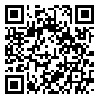

Volume 22, Issue 2 (8-2024)
RBS 2024, 22(2): 301-311 |
Back to browse issues page
Download citation:
BibTeX | RIS | EndNote | Medlars | ProCite | Reference Manager | RefWorks
Send citation to:



BibTeX | RIS | EndNote | Medlars | ProCite | Reference Manager | RefWorks
Send citation to:
Feizi M, Shariat َ. Prediction of Social Anxiety Symptoms Based on Cognitive-Attentional Syndrome Mediated by Emotional Awareness in Adolescent Girls in Isfahan. RBS 2024; 22 (2) :301-311
URL: http://rbs.mui.ac.ir/article-1-1761-en.html
URL: http://rbs.mui.ac.ir/article-1-1761-en.html
1- M. A. in Clinical Psychology, Department of Psychology, Khomeinishahr Branch, Islamic Azad University, Khomeinishahr/Isfahan, Iran.
2- .D, Assistant prof. of Psychiatry, Behavioral Sciences Research Center, Department of Psychiatry, Isfahan University of Medical Sciences, Isfahan, Iran. M.D, Assistant Prof. of Psychiatry, Department of Psychiatry, School of Medicine, Isfahan University of Medical Sciences, Isfahan, Iran. ,alish@med.mui.ac.ir
2- .D, Assistant prof. of Psychiatry, Behavioral Sciences Research Center, Department of Psychiatry, Isfahan University of Medical Sciences, Isfahan, Iran. M.D, Assistant Prof. of Psychiatry, Department of Psychiatry, School of Medicine, Isfahan University of Medical Sciences, Isfahan, Iran. ,
Abstract: (913 Views)
Aim and Background: Social anxiety disorder is a common psychological disorder among adolescents that leads to impairments in their personal, academic, and social functioning. Therefore, this study aimed to predict social anxiety symptoms based on cognitive-attentional syndrome, considering the mediating role of emotional awareness in adolescents in the city of Isfahan.
Methods and Materials: This research was a descriptive-correlational study in the field of structural equation modeling. The statistical population included all female adolescents in the city of Isfahan, aged 12 to 18 years, with a sample size of 334 selected through convenience sampling. Participants completed the research questionnaires, including the Social Anxiety Questionnaire by Jerabak (1996), the Cognitive-Attentional Syndrome Questionnaire by Wells (2009), and the Emotional Awareness Questionnaire (EAQ-30) by Rieffe et al. (2007). Data were analyzed using structural equation modeling with SPSS-25 and AMOS-24 software.
Findings: Social anxiety symptoms can be predicted based on cognitive-attentional syndrome and emotional awareness (p < 0.05). Additionally, emotional awareness can be predicted based on cognitive-attentional syndrome (p < 0.01). Finally, the findings indicated that emotional awareness could mediate the prediction of social anxiety symptoms based on cognitive-attentional syndrome (p < 0.05).
Conclusions: Emotional awareness and cognitive-attentional syndrome are predictors of social anxiety, with emotional awareness serving as a mediator. This implies that a better understanding of these two variables can assist in the prediction and understanding of social anxiety.
Methods and Materials: This research was a descriptive-correlational study in the field of structural equation modeling. The statistical population included all female adolescents in the city of Isfahan, aged 12 to 18 years, with a sample size of 334 selected through convenience sampling. Participants completed the research questionnaires, including the Social Anxiety Questionnaire by Jerabak (1996), the Cognitive-Attentional Syndrome Questionnaire by Wells (2009), and the Emotional Awareness Questionnaire (EAQ-30) by Rieffe et al. (2007). Data were analyzed using structural equation modeling with SPSS-25 and AMOS-24 software.
Findings: Social anxiety symptoms can be predicted based on cognitive-attentional syndrome and emotional awareness (p < 0.05). Additionally, emotional awareness can be predicted based on cognitive-attentional syndrome (p < 0.01). Finally, the findings indicated that emotional awareness could mediate the prediction of social anxiety symptoms based on cognitive-attentional syndrome (p < 0.05).
Conclusions: Emotional awareness and cognitive-attentional syndrome are predictors of social anxiety, with emotional awareness serving as a mediator. This implies that a better understanding of these two variables can assist in the prediction and understanding of social anxiety.
Type of Study: Research |
Subject:
Special
Received: 2024/05/23 | Accepted: 2024/08/18 | Published: 2024/08/31
Received: 2024/05/23 | Accepted: 2024/08/18 | Published: 2024/08/31
Send email to the article author
| Rights and permissions | |
 |
This work is licensed under a Creative Commons Attribution-NonCommercial 4.0 International License. |



